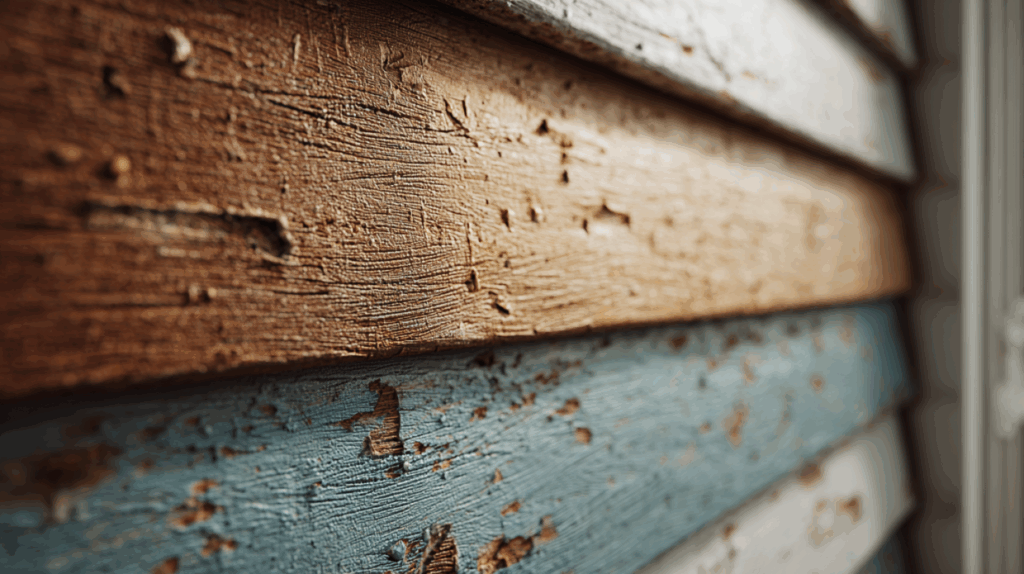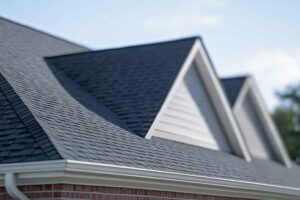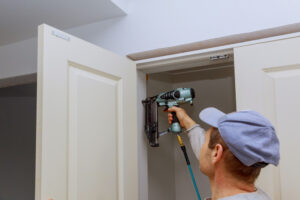Indiana winters are known for biting cold, snowstorms, and freeze-thaw cycles that can quickly expose any weaknesses in your home’s exterior. One of the most important defenses your home has during the cold season is its siding. But siding doesn’t last forever—and worn or damaged siding can lead to major problems during winter if left unaddressed.
In this guide, we’ll break down the key siding replacement signs to watch for, explain why timely action matters, and share tips on Indiana siding repair and winter siding prep from the experts at American Veteran Exteriors.
Why Siding Matters More in Winter
Your home’s siding does more than just look nice. It protects your insulation, structural framing, and interior walls from moisture, wind, and temperature extremes. In winter, your siding must work overtime to keep warm air in and cold air out.
Damaged or outdated siding allows drafts, pests, and water infiltration—leading to higher energy bills, mold risk, and long-term structural damage. Worse yet, cold weather can make siding repairs more difficult and costly once snow and ice set in.
That’s why now is the time to inspect your siding, repair any issues, or consider a full replacement if your home is showing clear signs of wear.

1. Cracks, Gaps, or Warping
One of the clearest siding replacement signs is visible cracking, warping, or wide gaps between panels. These can develop over time due to sun exposure, impact damage, or poor installation. In Indiana’s climate, even small openings can allow water and cold air to enter the walls.
When temperatures drop below freezing, trapped moisture can freeze and expand—widening the cracks and compromising your insulation. These problem areas are also magnets for pests looking for a warm place to nest during the colder months.
Fix it before winter: Minor warping may be addressed through targeted Indiana siding repair, but extensive cracking often means it’s time for a full replacement.
2. Faded or Peeling Color
Faded siding isn’t just an aesthetic concern—it’s a red flag that the material may be nearing the end of its life. When the siding’s color fades or begins to peel, it usually means the protective coating is deteriorating, leaving the material underneath vulnerable to moisture.
This is especially important in winter when precipitation increases and siding is exposed to snow, ice, and melting cycles. If your siding looks weathered or has lost its finish, it’s time for a closer look.
3. Rot or Soft Spots
Soft siding panels or visible rot are clear indications of water infiltration. Wood and composite siding are especially prone to moisture damage, and once rot sets in, it can quickly spread.
Check for:
- Soft spots when you press on siding panels
- Areas that feel spongey or damp
- Siding pulling away from the home
Rot is more than a cosmetic issue—it can compromise the structural integrity of your exterior walls. And moisture problems only get worse in winter when freezing water expands and puts pressure on already damaged areas.
4. Rising Energy Bills
If your heating costs are climbing but your thermostat habits haven’t changed, your siding could be the culprit. Worn-out siding contributes to energy loss by letting warm air escape and cold drafts enter.
Proper winter siding prep should include an evaluation of your home’s thermal envelope—especially if you’re already seeing signs of insulation loss or heat transfer. New siding, particularly when paired with modern house wrap or rigid foam insulation, can significantly improve energy efficiency.
5. Mold, Mildew, or Water Stains
Discoloration or mold growth on siding is often caused by water that’s not draining properly. While some staining is surface-level, mold or mildew that keeps returning may indicate moisture trapped behind the siding.
In colder weather, trapped moisture may freeze, increasing the chance of ice damage. Long-term exposure also risks interior water damage and reduced indoor air quality due to mold spores entering the home.
Check for:
- Green, black, or brown streaks
- Strong mildew odors near walls
- Stains that appear under windows or rooflines
6. Bubbling or Blistering
Siding that’s bubbling or blistering is often reacting to prolonged moisture exposure or extreme heat. These bubbles are usually a sign that water has gotten beneath the surface.
This issue is especially problematic ahead of winter. Once freezing temperatures arrive, that trapped moisture may cause panels to crack or pull away from the home entirely. Left untreated, the damage spreads and may require major repairs by spring.

7. Interior Paint or Wallpaper Damage
Not all siding replacement signs are visible from the outside. If you’ve noticed peeling paint, warped baseboards, or discolored walls inside your home—especially on exterior-facing walls—your siding may no longer be doing its job.
Interior moisture damage during winter often stems from exterior siding that’s allowing water intrusion, air leaks, or insufficient insulation.
8. Pest Activity
Have you noticed more insects or rodents in your attic or walls? Siding with gaps or cracks gives pests easy access to your home’s interior—especially as they seek shelter during colder months.
Squirrels, mice, and insects can enter through small openings and cause damage to insulation, wiring, and wooden framing. Inspect your siding carefully and seal off any entry points before winter sets in.
Best Siding Options for Indiana Winters
If you’re considering siding replacement, it’s important to choose materials built to handle Indiana’s unique seasonal demands. Here are a few of the most reliable options we recommend:
Vinyl Siding
- Cost-effective
- Low maintenance
- Available in insulated styles
- Good resistance to moisture and wind
Fiber Cement Siding
- Fire-resistant
- Resistant to pests and moisture
- Handles freeze-thaw cycles well
- Heavier and more durable
Composite Siding
- Mimics wood without the maintenance
- Resistant to warping and rotting
- Energy-efficient with added insulation
At American Veteran Exteriors, we help homeowners compare products based on budget, climate, and design goals—and we only install siding built to withstand Indiana’s climate extremes.
Benefits of Replacing Siding Before Winter
Replacing siding in fall or early winter—before snow begins to fall—comes with some key advantages:
- Better sealing and insulation: Reduced drafts and more comfortable interiors
- Lower utility bills: Improved energy efficiency for heating season
- Prevent moisture intrusion: Avoid rot, mold, and water damage
- Curb appeal upgrade: Perfect if you’re planning to sell or host for the holidays
- More predictable scheduling: Avoid spring contractor backups
Why Choose American Veteran Exteriors for Siding in Indiana?
We’re more than just a contractor—we’re your partner in protecting your home.
- Veteran-Owned and Operated: Rooted in integrity, precision, and respect
- Local Expertise: We understand Indiana’s weather, homes, and building codes
- Top-Quality Materials: We work with proven manufacturers only
- Complete Exterior Solutions: Roofing, gutters, siding, windows, doors, and more
- Community-Driven: We donate a portion of every project to St. Jude and Wounded Warrior Project
- Veteran Discount: 5% off for veterans and active-duty service members
Act Now—Before Winter Makes It Worse
Indiana winters are tough—but your siding shouldn’t be. If you’ve seen any of the siding replacement signs above, don’t wait for ice and snow to cause more damage. Our team can evaluate your siding, recommend cost-effective solutions, and help you protect your home before cold weather hits.
Get a free estimate now and let American Veteran Exteriors make sure your home is winter-ready, inside and out.





